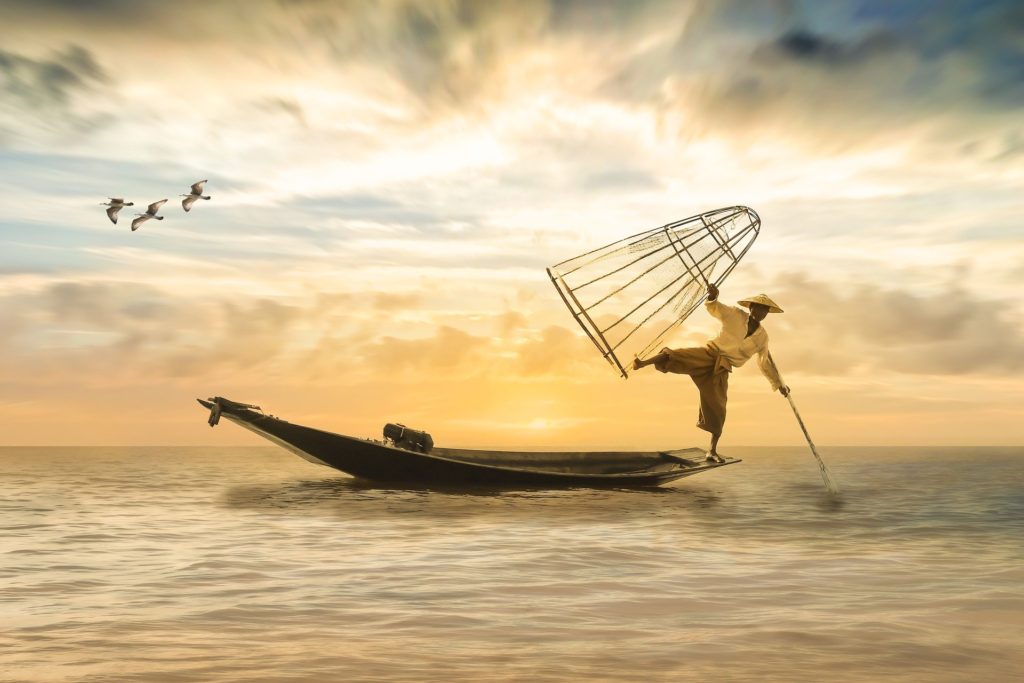“If you are overfishing at the top of the food chain and acidifying the bottom of the food chain, you are creating a squeeze that could conceivably collapse the whole system” (Carl Safina).
No doubt that oceans are overharvested by fishermen for the sake of massive fish. Large scale unreported fishing that is almost unable to track damaging not only the food chain, ocean population but also the ocean water that is becoming unsuitable (appropriate fish population keeps the water clean through a number of biological processes) day by day for fish life.
Seafood is the primary food source of more than one billion people from different countries including Japan, Myanmar, China, and Vietnam being the topper ones. Most popular seafood includes Shrimps, Salmon, Tuna, Alaskan Pollok being the most favorite worldwide, and many other bony fishes (oysters, mussels, snails, crabs, crayfish, cockles, scallops, periwinkles, sawfish, sturgeons, skates, rays, etc.).
From the last 50 years, the rise in seafood consumption is almost double. According to FAO, 2016, annual seafood consumption rise from 10kg to 20kg during 1960 to 2013. Total seafood production (78% from fisheries and 22% from aquaculture sources) estimated was 167 billion tons in 2014.
Endangered Species and Extinction:
Overfishing from the past few decades imposed damaging effects not on the entire food chain but also affected the corals, turtle and other phytoplankton population. Many important fish species including Bluefin Tuna, Grand Banks Cod, got declined due to the imbalance caused by overharvesting and destructive ways of fishing. Infinite number of marine mammals especially sharks, turtles and sea birds are hunted every year. Of them, sharks are considered as endangered species while many other including Dermochelys coriacea (lute turtle), Cephalorhynchus hectori maui (critically endangered) etc.
Over harvest of one specie:
All species of fish, shell fish and turtles are not liked by people for eating. Due to a few number of species that always remain in high demand, their overharvesting lead make them the targeted species. Unchecked Over fishing of targeted species lead to the disturbance of food chain due to which the fishes cannot be able to sustain themselves.
Lack of Laws and Regulations:
Over exploitation rate goes beyond 10 percent during the last few years just because of the lack of proper strategies and regulation for fishing. MedReAct stands for Mediterranean Recovery Action is an environmental organization, reported about the critical situation of Mediterranean Sea and blames the European political inaction, lack of legislations, and weak enforcement.
Foot trawling caused by large heavy nets that wipe everting in their way is a major threat not only for the fish population but also for the small scale fishermen. They rip up deep sea animal’s habitat causing an irreversible damage to the coral reefs, sponge grounds etc. on the other hand, trawling is almost useless as it brings or catch scrap fish, juveniles and undersized hake. The Government of Malta, Spain, Italy and Sicily took action against bottom trawling ad banned its use below 100 meters.
Plastic Pollution:
According to UZS annual report, in 2015, more than three thousand metric tons of plastic are present/floating on the Mediterranean Sea. Plastic is ingested by sea birds that is indigestible thus reduce stomach storage place, starvation and ultimately the death. Mediterranean Sea is known as the biggest fishing and tourists spot. At the occasion of annual “Our Ocean Conference” in 2017, the Malta Government took a number of effective measures to assure the reduction of plastic pollution by engaging the tourists, fishermen and plastic recycling industries.
Alternate stress on Ocean:
Aquaculture is defined as the breeding, raising and harvesting certain specific fish in water. Aquaculture is a blessing in terms of protecting the endangered species and supplying almost seven million to thirty three million tons of food fish in order to compensate the rising demand of fish and restore the stocks. Being an inexpensive source of seafood, Aquaculture is rising at the rate of 6% annually (FAO).
References:
Purnama, I., & Wardah, W. (2018). THE ROLE OF ARTICLE XX OF THE GENERAL AGREEMENT ON TARIFFS AND TRADE (GATT) 1994 IN COMBATING ILLEGAL FISHING ACTIVITY: A CASE STUDY
OF THE UNITED STATES OF AMERICA. Jurnal Ilmiah Mahasiswa Bidang Hukum Kenegaraan, 2(1), 66- 81.
Guillen, Jordi, Fabrizio Natale, Natacha Carvalho, John Casey, Johann Hofherr, Jean-Noël Druon, Gianluca Fiore, Maurizio Gibin, Antonella Zanzi, and Jann Th Martinsohn. “Global seafood consumption footprint.” Ambio 48, no. 2 (2019): 111-122.
Runge, H. L. (2019). Plastic ocean: threats and options for action (Doctoral dissertation).
Nevins, D., Sheehan, S., & Yong, J. L. (2019). Malta. Cavendish Square Publishing, LLC. Kreb, D., Lhota, S., Porter, L., Redman, A., Susanti, I., & Lazecky, M. (2020). Long-term population and distribution dynamics of an endangered Irrawaddy dolphin population in Balikpapan Bay, Indonesia in response to coastal development. Frontiers in Marine Science, 7, 746.

